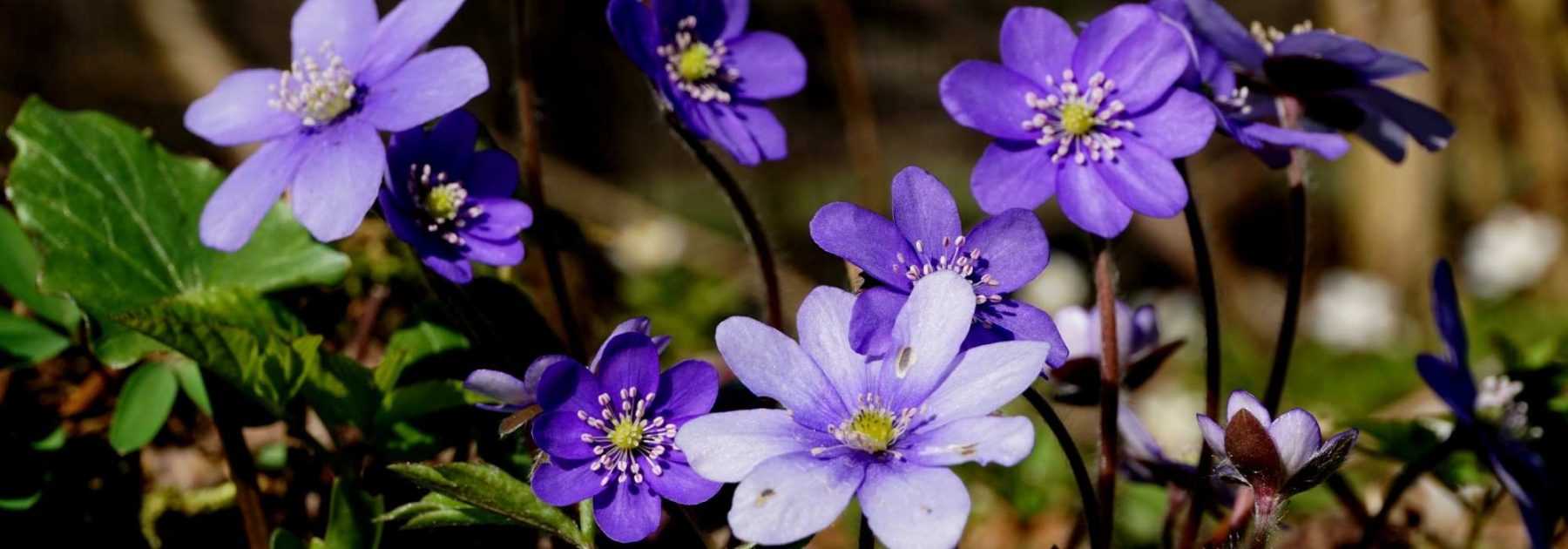
Liverworts: planting and growing
Contents
Liverworts in a Nutshell
- These are small perennial plants for woodland areas that require a spot in partial shade
- They offer a delicate star-shaped flowering in blue, white or pink from late winter
- Their remarkable trilobed foliage persists more or less through winter
- Hardy and robust, they have few requirements beyond well-drained, fresh soil
- They thrive in your partially shaded borders and rockeries, beneath the cover of trees and bushes
Our expert's advice
Hepaticas, also known as liverleaf anemones (not to be confused with the algae or moss-like Marchantiophyta liverworts) are small perennial plants of the woodland understorey. Like the Hepatica nobilis, the most widespread species, these herbaceous perennial plants from the Ranunculaceae family, closely related to anemones, bring life to partially shaded areas of the garden from late winter onwards. Flowering occurs in February-March, at the same time as snowdrops. Hepaticas form cushions of green trilobed leaves, decorative even in winter, reaching 15 cm in all directions. They are adorned with delicate star-shaped flowers ranging from the most astonishing blue to violet, through pure white and pink.
In well-drained and cool soil, they prove undemanding, these small montane plants being naturally robust and hardy!
Charming and discreet, they are very useful for brightening up shady, cool corners and wooded areas of the garden.
Once used as a medicinal plant with properties to treat the liver, Hepaticas are now considered toxic.
Discover these plants that thrive in woodland settings, under trees!
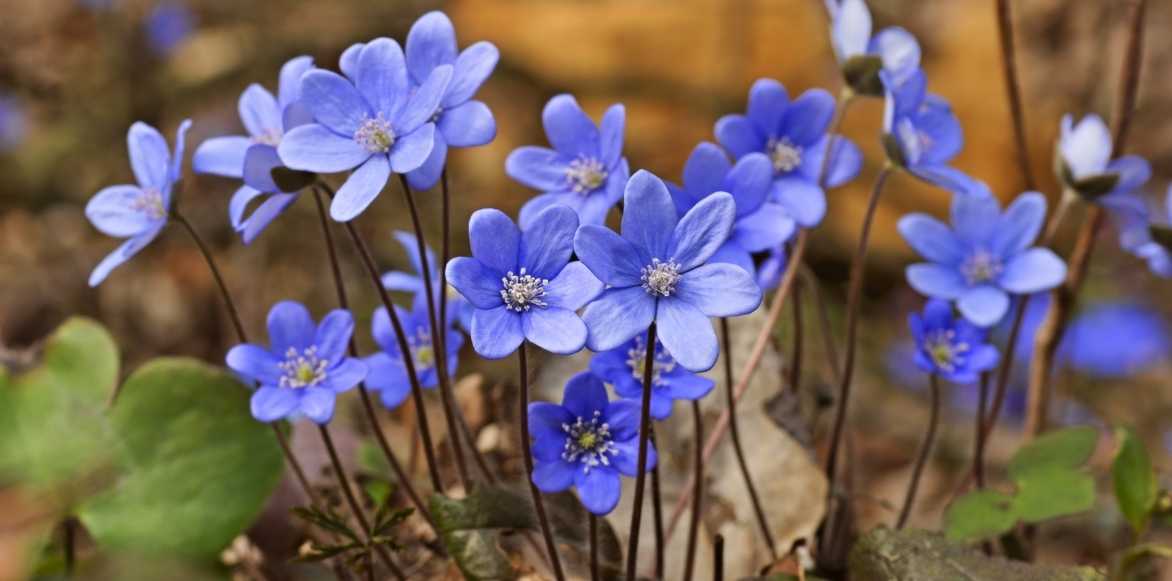
Hepatica nobilis
Description and botany
Botanical data
- Latin name Hepatica
- Family Ranunculaceae
- Common name Noble liverwort, Liverleaf
- Flowering March to April
- Height 0.15 cm
- Exposure Partial shade, shade
- Soil type Fresh, well-drained
- Hardiness -15 °C and below
Liverleaf, Hepatica in Latin, is a small perennial woodland plant closely related to wood anemones (Anemone nemorosa), belonging to the Ranunculaceae family, like buttercups. It can be found throughout most of Europe, as well as in Siberia and boreal America. The genus includes about ten perennial species, with the most widespread being Hepatica Nobilis, also called liverleaf or noble liverwort. Very hardy, this species grows wild in our regions. It is found in mountainous deciduous woodlands (up to 2200m altitude) in eastern and southern France, the Alps, the Pyrenees, and also in Corsica. Hepatica Nobilis has given rise to numerous cultivars. Hepatica nobilis var Japonica is a selection originating from Japan, from which the ‘Forest’ series varieties were developed.
From a short, fibrous stump, this herbaceous perennial slowly forms a 15 cm high carpet of leaves, spreading 15 to 20 cm wide. It develops in rosettes of leaves, most often evergreen in winter, which renew themselves in spring after flowering. These basal leaves, 3 to 6 cm long, are thick, leathery and borne on long petioles. They have a lamina divided into 3 rounded or pointed lobes fringed with very fine hairs. They are matte dark green on top, sometimes marbled with white, and wine-red coloured underneath, which earned the plant its nickname “Liverleaf” due to this hue and their trilobed shape reminiscent of a liver.
Flowering occurs in March-April, earlier or later depending on the climate, before the appearance of new leaves, heralding the return of fine weather. Each solitary flower is borne on a downy stalk just above the foliage. They measure 2 to 4 cm in diameter and consist of 6 to 9 ovate sepals radiating around a centre of white or pink stamens clearly visible in a diadem. The colour of these single corollas, very rarely semi-double, ranges from pure white to bluish-purple in Hepatica nobilis ‘Purple Forest’, to royal blue in the type species, to magenta red-pink in Hepatica nobilis ‘Red Forest’. Their colour may vary depending on the soil type.
They are set in an involucre formed of three bracts.
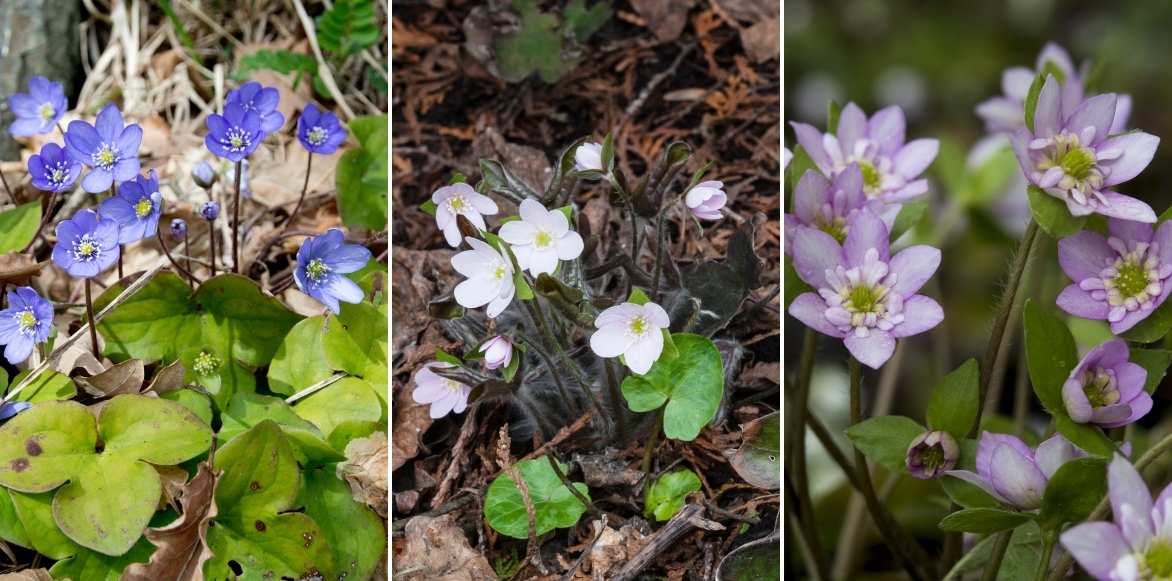
Flowers and foliage of liverleafs. Right, Hepatica nobilis var Japonica
Once pollinated, the flowers produce small seeds harvested and dispersed in the garden by ants (myrmecochory), leading to spontaneous seedlings.
In the Middle Ages, Hepatica nobilis was reputed as a medicinal plant for treating the liver. Today, it is considered toxic in large doses. In the language of flowers, liverleaf signifies confidence.
Read also
What to plant under a tree?Main species and varieties
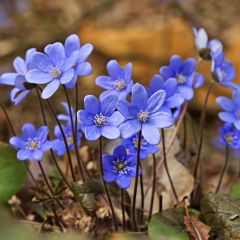
Hepatica nobilis
- Flowering time March, April
- Height at maturity 15 cm
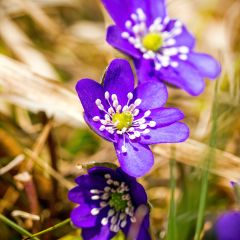
Hepatica nobilis Purple Forest
- Flowering time April, May
- Height at maturity 15 cm
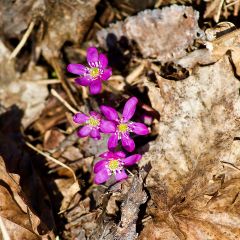
Hepatica nobilis Red Forest
- Flowering time April, May
- Height at maturity 15 cm
Discover other Hepatica
View all →Available in 1 sizes
Available in 1 sizes
Available in 1 sizes
Available in 1 sizes
Available in 1 sizes
Available in 1 sizes
Available in 1 sizes
Planting
Where to plant it?
Hepatica is a very robust plant, hardy down to -30°C for Hepatica Nobilis. The varieties in the ‘Forest’ series are less hardy than our European hepatica, though still showing very respectable cold resistance down to -15°C.
It can adapt anywhere except perhaps in Mediterranean climates, which are too dry and hot in summer.
This is a small perennial for partial shade and woodland areas, it is never happier than under the cover of deciduous trees and bushes which will provide necessary shade in summer. In its native habitat, this small montane plant carpets limestone rocks. While it shows a preference for alkaline soils, it will also thrive in soil enriched with leaf mould.
It will form pretty loose cushions in fresh soil, even quite dry in summer, very rich in humus and always very well-drained as it dislikes excess water.
Hepatica grows slowly, so once well-rooted, it won’t appreciate being moved: choose its location carefully.
If conditions suit it, it will self-seed where it pleases, sometimes far from its original spot.
It will brighten up woodland areas, all slightly shady spots in the garden, cool rockeries, as well as borders along paths or flower beds. Planting on a raised area will allow you to admire its lovely early flowering.
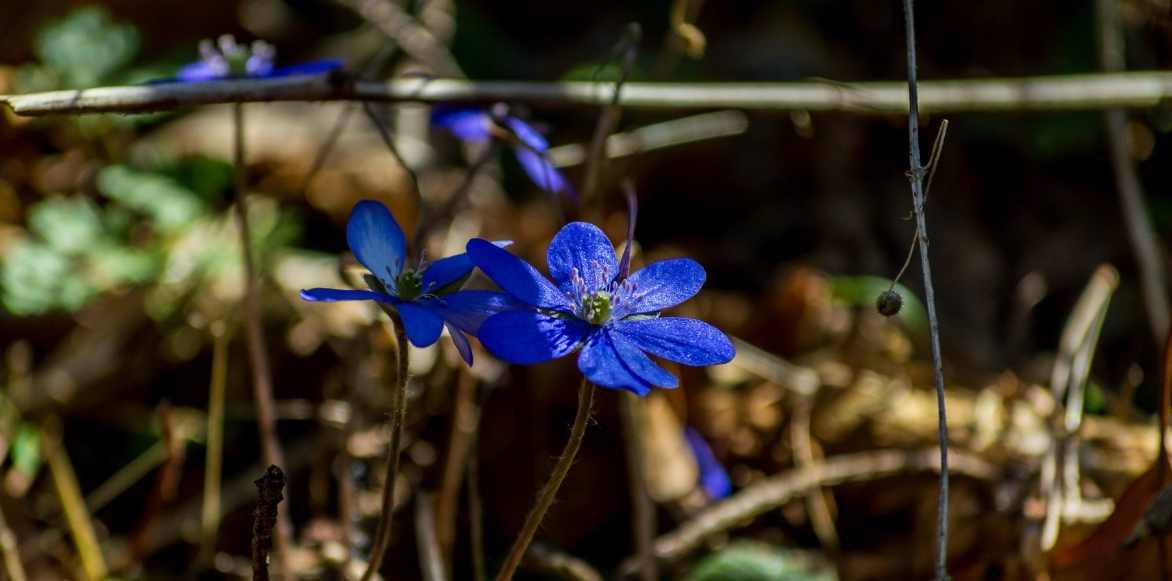
Hepatica thrives in woodland settings, in the shade of trees
When to plant hepatica?
Plant hepatica preferably in autumn from September to November when there’s no frost, so it can establish roots well before winter and benefit from autumn rains. Spring planting is also possible provided you monitor watering as it will need regular water to encourage rooting, especially if the months after planting are dry.
How to plant it
In open ground
Choose a spot in partial shade. Plan for at least 6 buckets to create a nice group effect. Plant 25 cm apart in all directions. Your soil must be well-drained as hepatica dislikes waterlogged roots.
- Dig a hole 2 to 3 times wider than the root ball
- Place the plant in the centre of the hole, with the collar at soil level
- Backfill with a mix of soil and leaf mould, especially if the soil is heavy to lighten it
- Firm down
- Water thoroughly then regularly to help establishment
- Mulch with leaf mould or well-rotted compost to keep soil moist
In pots
Growing hepatica in pots is possible. Choose a terracotta container with drainage holes.
- Drain the bottom of the pot with gravel or clay pebbles
- Add equal parts garden soil (or potting compost), clay pebbles and leaf mould
- Position the root ball and fill with remaining substrate
- Gently firm down, water, then place the pot away from harsh sunlight
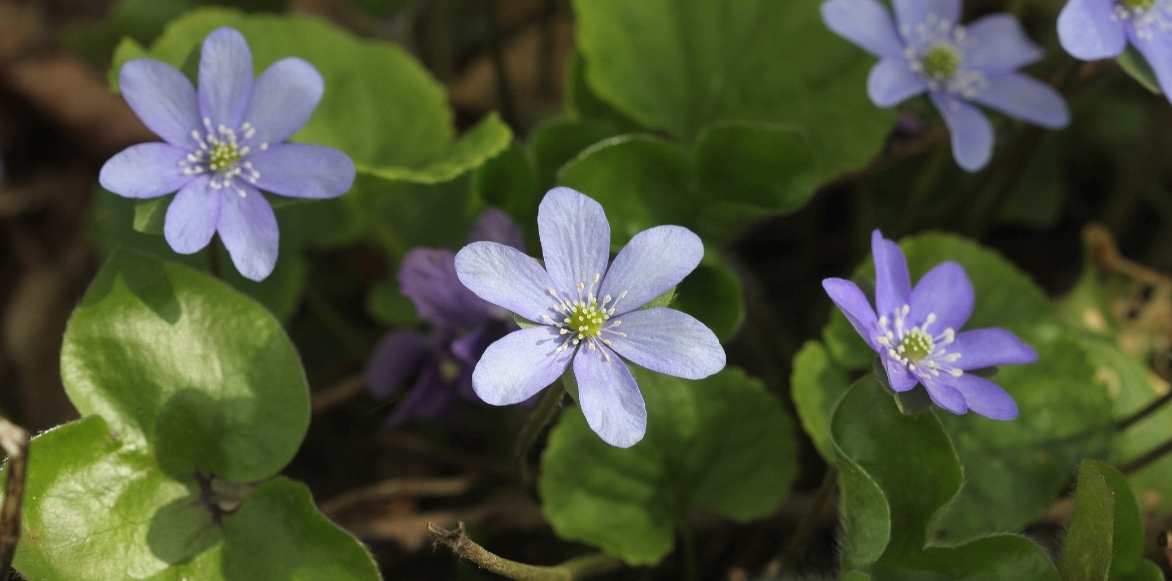
Hepatica nobilis
Cultivation, care and maintenance
Once well established in a suitable location, the Hepatica is a virtually maintenance-free plant.
Ensure regular watering during the first year of growth, then 1 to 2 times per week during hot spells. It thrives in soil that remains cool in summer: spread a layer of mulch (such as good leaf mould) around its base to prevent the soil from drying out.
Apply a little compost at the base each year in spring.
Divide every three to five years in autumn to rejuvenate the clumps.
In pots, keep the compost moist, especially in summer or during dry spells—it should not dry out between waterings. During the growth period, from March onwards, you can fertilise with a liquid fertiliser for flowering plants. Repot every three years into a larger container.
In spring, follow our advice to protect the new leaves from slugs and snails.
Propagation
Dividing clumps in autumn, during September-October, is a simple method to propagate hepaticas. You can attempt sowing under a cold frame in autumn, but you will likely obtain young plants that differ from the parent plant. Transplant the seedlings in early autumn into individual buckets. Planting out should be done the following spring.
- Using a garden fork, lift a portion of mature stump
- Divide it into several sections
- Replant these divisions immediately in the ground or in pots and water thoroughly
Pair with
With their single, colourful and early flowering and evergreen foliage, hepaticas brighten up the shady and wooded corners of the garden. They carpet the base of trees and bushes, illuminate the front of borders, rockeries, or even pots and planters.
Because they thrive in partial shade and fresh soil, don’t hesitate to plant them at the edge of woodland, alongside shade-loving perennials like ferns, hardy geraniums or bulbs such as bluebells and wood anemones. Also consider ground-cover perennials for shade like heucheras and brunneras, ideal companions. As they grow slowly, however, ensure they are not overwhelmed by more invasive neighbouring plants.
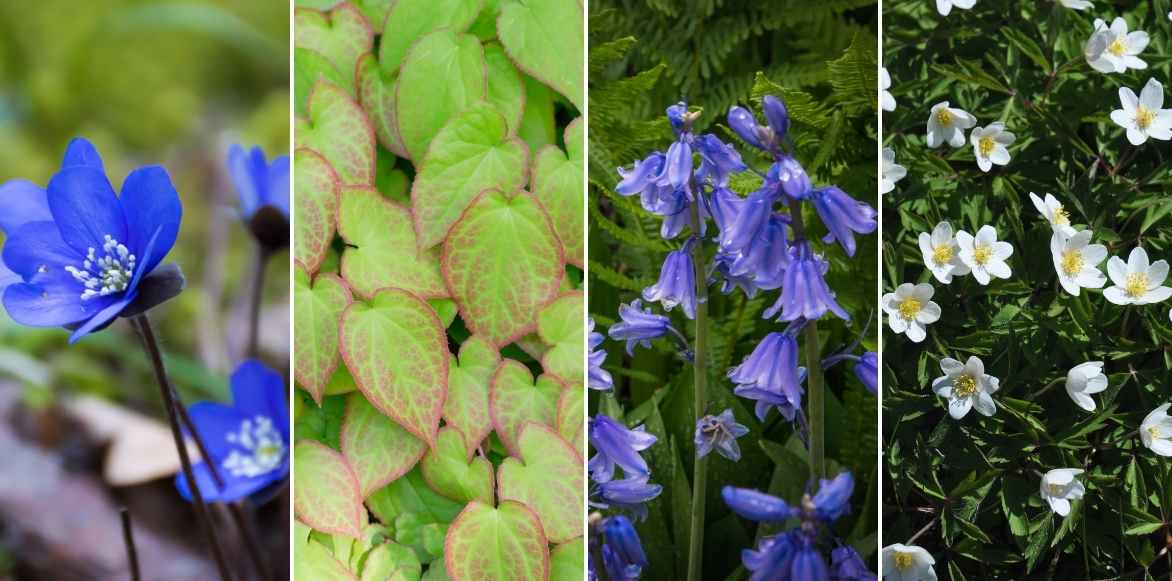
Hepaticas, epimediums, bluebells and ferns, and wood anemones
In cool rockeries, they pair well with epimediums and saxifrages.
In borders, they will edge the base of deciduous bushes like deutzias and mock oranges, which will provide welcome coolness during summer.
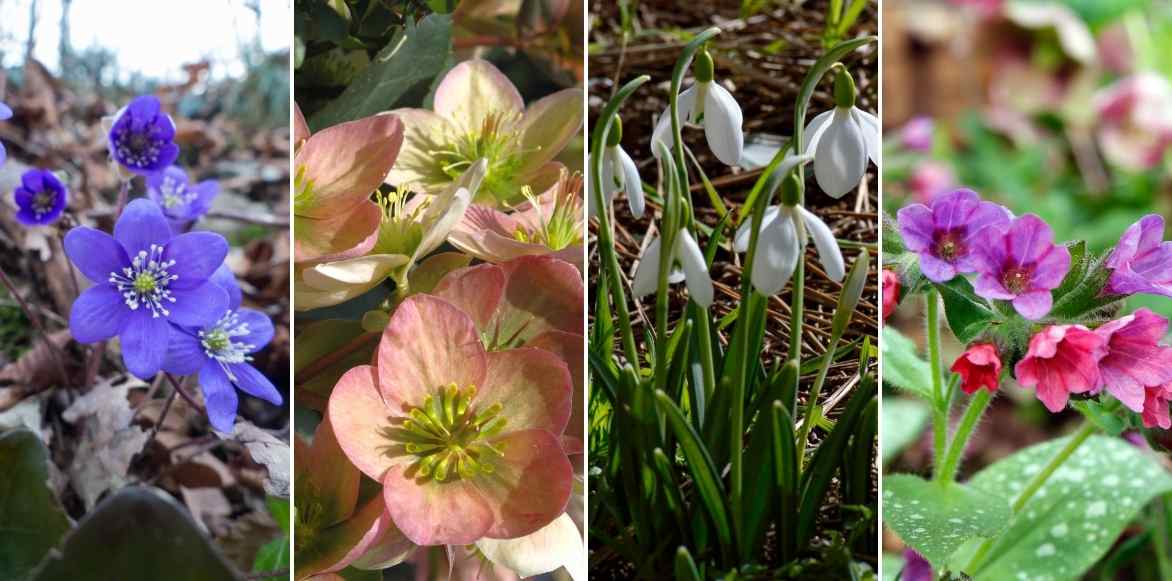
Hepaticas, hellebores, snowdrops and lungworts
They are perfect for completing cool, delicate scenes heralding the arrival of fine days with early spring bulbs like crocuses and snowdrops, and winter-flowering perennials such as hellebores, winter aconites, and lungworts.
Useful resources
- Do you have a woodland area to brighten with flowers? Get inspired by our advice sheets “What to plant under my trees?” and our suitable solutions and plants
- Discover the best plants for woodland planting
- Subscribe!
- Contents


































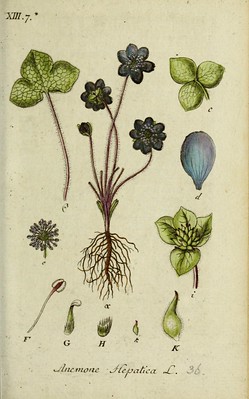
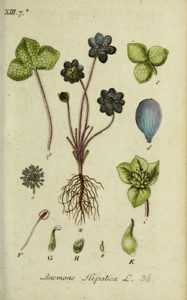
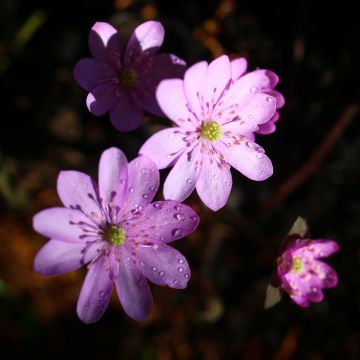
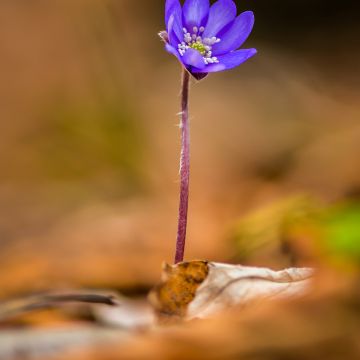


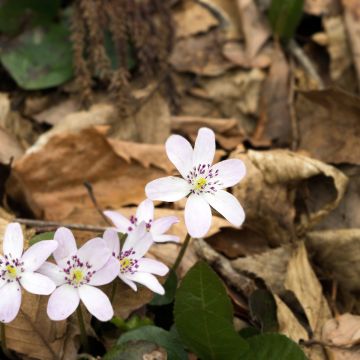
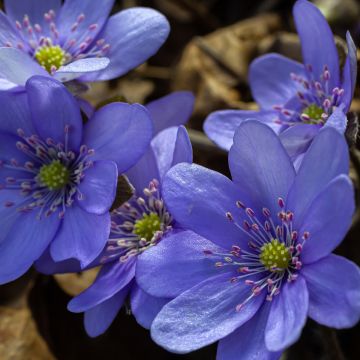

Comments